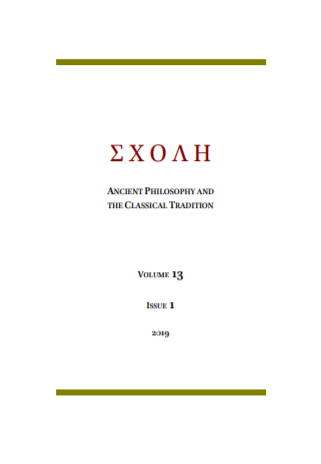Формирование представления о шарообразности Солнца в греческой философии и науке
The Emergence of the Idea of a Spherical Sun in Greek Science and Philosophy
Author(s): Dmitri PanchenkoSubject(s): Ancient Philosphy, Philosophy of Science
Published by: Новосибирский государственный университет
Keywords: Cosmology; theories of the Sun; Moon and Earth; geographic horizons; the Pythagoreans;
Summary/Abstract: According to a standard idea of Greek science and philosophy, the shape of the sun is spherical. Such an idea appears already in Aristotle who offers, however, no good account for it, and only Stobaeus cites an authority, or rather collective authority, the Pythagoreans, for an early recognition of the idea in question. The ancient tradition left no direct evidence of how the sphericity of the sun was recognized, and the issue attracted very little attention in modern scholarship. I propose that in the late sixth century new empirical knowledge about the sun reached the Aegean and Italy. Some people who crossed the northern tropic repeatedly observed the sun from its ‘other’ side, for in the height of the summer an observer located south of the northern tropic saw the midday sun in the north. This made impossible Anaximander’s idea of the sun as a body containing fire and having one aperture and triggered a search for a better version. Since the sun invariably displayed a circular outline at any time, at any place and on all sides of the horizon, one had to consider the possibility that its shape was either spherical or ‘bowllike’. The study of lunar light that led to the discovery of the sphericity of the moon was also helpful. The doctrine of a spherical sun was firmly established by the consensus of professional astronomers rather than due to an initiative by an outstanding thinker; however, one may think that Parmenides contributed to it. A spherical sun cannot be a sphere of fire – without a container, fire would have dispersed. This problem brought about a number of theories that treated the sun as a kind of mirror, etc. Further, a spherical sun that issues a reflected light was recognized to have been a solid and hence a heavy body, which contributed to approaching the spheres of the Sun, Moon and Earth in a similar way and making the Earth a planet.
Journal: ΣΧΟΛΗ. Философское антиковедение и классическая традиция
- Issue Year: XIII/2019
- Issue No: 1
- Page Range: 235-250
- Page Count: 16
- Language: Russian

